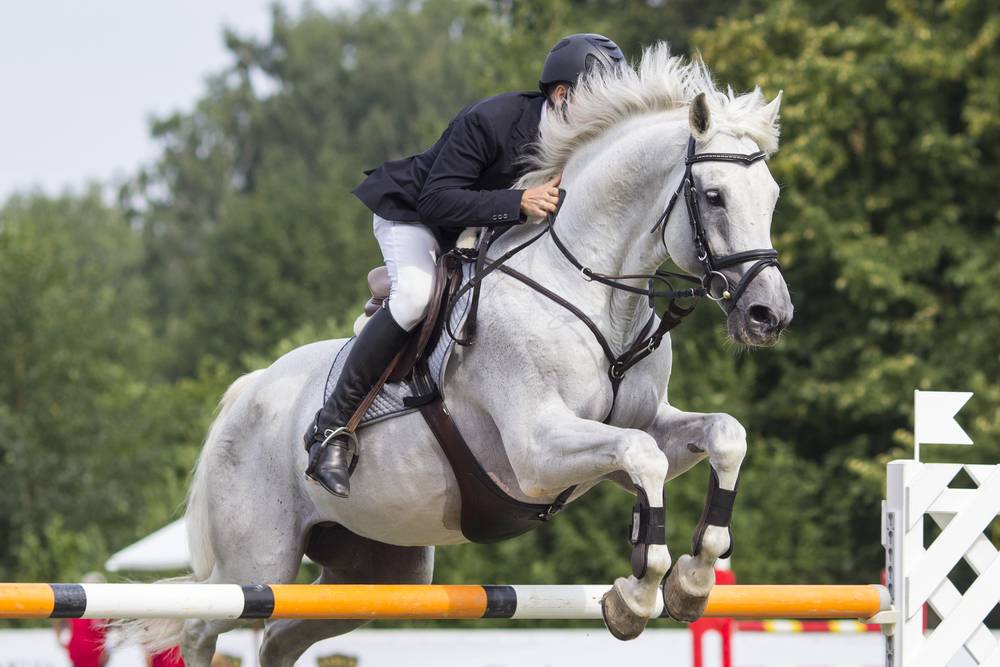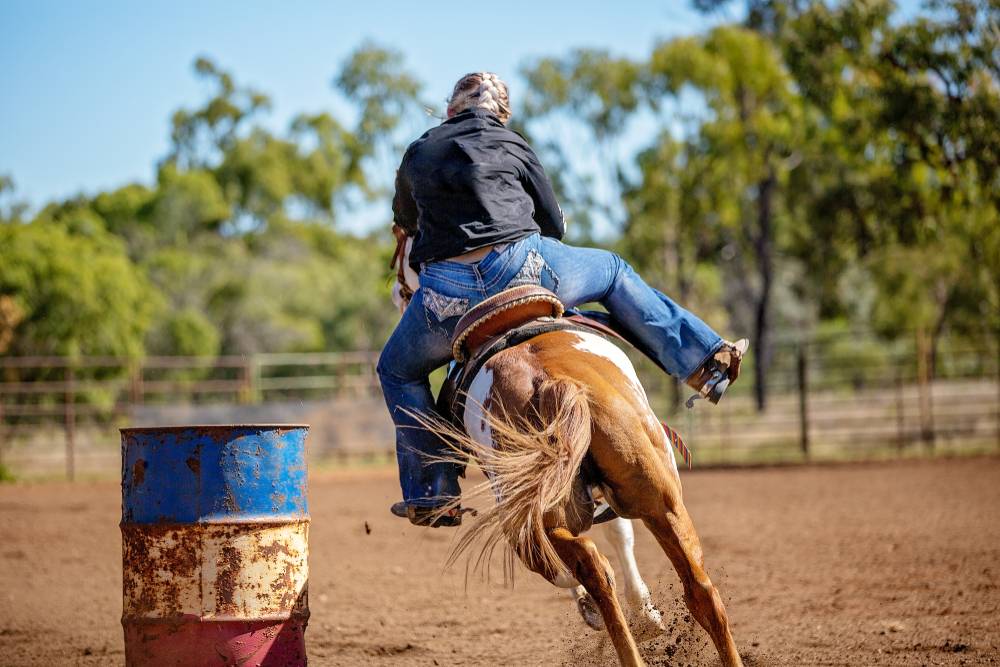
In a world where competition, skill, and athleticism interweave, whether horse riding qualifies as a sport remains an intriguing puzzle. This inquiry echoes through stables and arenas, engaging enthusiasts, athletes, and scholars in discussion. Beyond its surface, this debate challenges our comprehension of what constitutes a sport.
Equines have been human companions for centuries embodying immense strength, agility, and elegance. This deep bond between humans and horses has given rise to equestrian sports, an area that showcases the purest form of partnership between rider and horse.
So, Is Horse Riding a Sport?
Yes, horse riding is officially recognized as a sport by governing bodies like the International Equestrian Federation (FEI). It is included in prestigious international competitions like the Olympics and the World Equestrian Games. Riding a horse combines athleticism, skill, and strategy, demanding physical and mental prowess from riders.
The Historical Context of Riding a Horse
In order to truly understand the essence of horse riding as a sport, let’s dive into its historical origins. Equines have played significant roles across various cultures, ranging from the nomadic groups of Central Asia to the chivalrous knights of medieval Europe. Throughout these diverse contexts, horse riding has evolved from a means of transportation to an art form, showcasing the riders’ mastery over these magnificent animals. This deepened bond between humans and equines has led to the development of various equestrian disciplines.
Over the course of centuries, horse riding has evolved from a necessary skill to a refined pursuit. Equestrian arts, like dressage, have emerged, placing emphasis on the harmonious bond between rider and horse. As civilizations advanced, riding a horse transformed into a recreational activity for the privileged, blurring the distinction between leisure and sport. Despite its aristocratic beginnings, the competitive nature of horse riding has firmly established it as a recognized sport.

Horse Riding: Art, Leisure, or Sport?
The multifaceted nature of horse riding elicits diverse perspectives. Some regard it as an art, appreciating the graceful movements and harmonious bond between rider and horse. Others see it as a leisurely pursuit, finding tranquility in the rhythmic gait of their mounts amidst nature. However, when examined as a traditional sport, horse riding reveals its athletic intricacies. Riders must exhibit technical finesse and physical prowess to excel in this discipline.
Horse riding is undoubtedly a sport that demands rigorous training, discipline, and dedication. Both physical conditioning and mental fortitude are crucial for riders to excel in equestrian sports. The intricacies of horse behavior require riders to make split-second decisions during competitions. The inclusion of horse riding in prestigious events like the Olympics emphasizes its status as a competitive sport characterized by intense training regimens and a strong competitive spirit.
Governing Bodies and Regulations
At the core of every legitimate sport, there exist governing bodies that establish rules, standards, and ethical guidelines. In the case of equestrian sports, the International Equestrian Federation (FEI) assumes a central role. Established in 1921, the FEI oversees international competitions, ensuring a level playing field for riders worldwide. Through comprehensive regulations, the FEI addresses various aspects, including horse welfare, doping controls, and equipment standards. The presence of such regulatory bodies not only guarantees fair play but also fosters a sense of integrity within equestrian sports.
Recognition from official governing bodies elevates horse riding from a simple pastime to a structured and regulated sport. Such regulations ensure the safety and well-being of equines while also upholding principles of sportsmanship and fair competition. Adhering to these standards solidifies horse riding’s status as a respected and credible athletic pursuit, acknowledged on a global scale.
Physical and Mental Demands of Horse Riding
Beneath the graceful exterior of equestrian sports exists a world of physical and mental challenges that rival those of any conventional sport. Riders, often appearing effortless in their command, must possess unmatched physical attributes. Core strength, balance, and coordination are crucial, enabling effective communication between riders and their horses. Riders undergo rigorous training regimens, incorporating cardiovascular exercises, strength training, and flexibility drills to enhance their physical capabilities.
Just as important are the mental obstacles encountered by equestrians. Equestrian sports necessitate concentration, self-control, and emotional strength. Horse riders must maintain composure in high-pressure situations, maneuvering through intricate courses with precision and confidence. The ability to interpret a horse’s body language, anticipate its responses, and adapt their own movements accordingly demonstrates the mental sharpness needed. The connection between rider and horse, built on trust and communication, highlights the emotional intelligence that is an essential aspect of equestrian sports.

Competitive Horse Riding: Main Disciplines and Events
Equestrian sports encompass a wide range of disciplines, each presenting its own unique challenges and subtleties. Dressage, often referred to as horse ballet, emphasizes precision and harmony, requiring riders to execute intricate movements with finesse. Show jumping, a test of agility and speed, challenges riders to navigate a course of obstacles within a specified time. Eventing, a triathlon of equestrian sports, combines dressage, cross-country jumping, and show jumping, putting the riders’ versatility and their horses’ endurance to the test.
These various disciplines come together on the grand stages of international events, where riders from all corners of the globe demonstrate their skills and vie for prestigious titles. Equestrian events, an integral part of the Olympic Games, symbolize their profound impact on the worldwide sporting arena. The World Equestrian Games, held every four years, unite the finest riders and horses, celebrating the sport’s rich diversity and fostering camaraderie among nations.
What Are The Benefits of Recognizing Horse Riding as a Sport?
Recognizing horse riding as a legitimate sport brings numerous advantages, benefiting athletes and the wider community. This includes improved funding and support, leading to better training facilities, access to top-notch coaches, and advanced equipment. Athletes from diverse backgrounds are provided with opportunities to refine their skills and compete at international levels, fostering inclusivity within the sport.
Recognition also plays a crucial role in raising awareness about equestrian sports, appealing to a wider audience. This increased visibility creates opportunities for sponsorships and partnerships, injecting economic prosperity into the sport. Riding schools and equestrian centers, which are vital for nurturing talent, receive enhanced attention and support, guaranteeing the sustainable development of the sport. Inclusivity becomes a fundamental principle that encourages participation from diverse demographic groups, thereby enriching the sporting community.
Challenges and Criticisms
Equestrian sports thrive on the thrill of competition and camaraderie, but they also face challenges, particularly in terms of animal welfare. It is paramount to prioritize the ethical treatment and compassionate care of horses, recognizing them as sentient beings. Achieving a harmonious balance between competitive rigor and the well-being of these magnificent creatures is of utmost importance. This can be achieved through strict regulations, regular veterinary checks, and the use of ethical training methods that promote the physical and emotional well-being of the horses.
Economic obstacles present an additional hurdle, impeding access to equestrian sports. The expenses linked to riding lessons, horse ownership, and competition participation can be prohibitive for numerous individuals. To tackle these financial disparities, it is essential to establish scholarship programs, community initiatives, and partnerships with educational institutions. By expanding access to equestrian sports, the sport can genuinely embody the inclusivity that epitomizes sportsmanship.
Conclusion
In the realm of sporting classifications, riding a horse emerges as more than just an art or leisurely pursuit. It is a distinguished sport that embodies discipline, skill, and the unbreakable bond between rider and horse. With its rich historical legacy, rigorous training, complex disciplines, and the presence of regulatory bodies, horse riding unequivocally establishes its rightful place in the world of sports. Recognizing horse riding as a sport enriches the sporting landscape, promoting diversity, inclusivity, and honoring the enduring connection between humans and horses. As we navigate the ever-evolving dynamics of sports, let us appreciate and celebrate the multifaceted nature of horse riding – an athletic pursuit that transcends boundaries and embodies the true spirit of competition and partnership.
